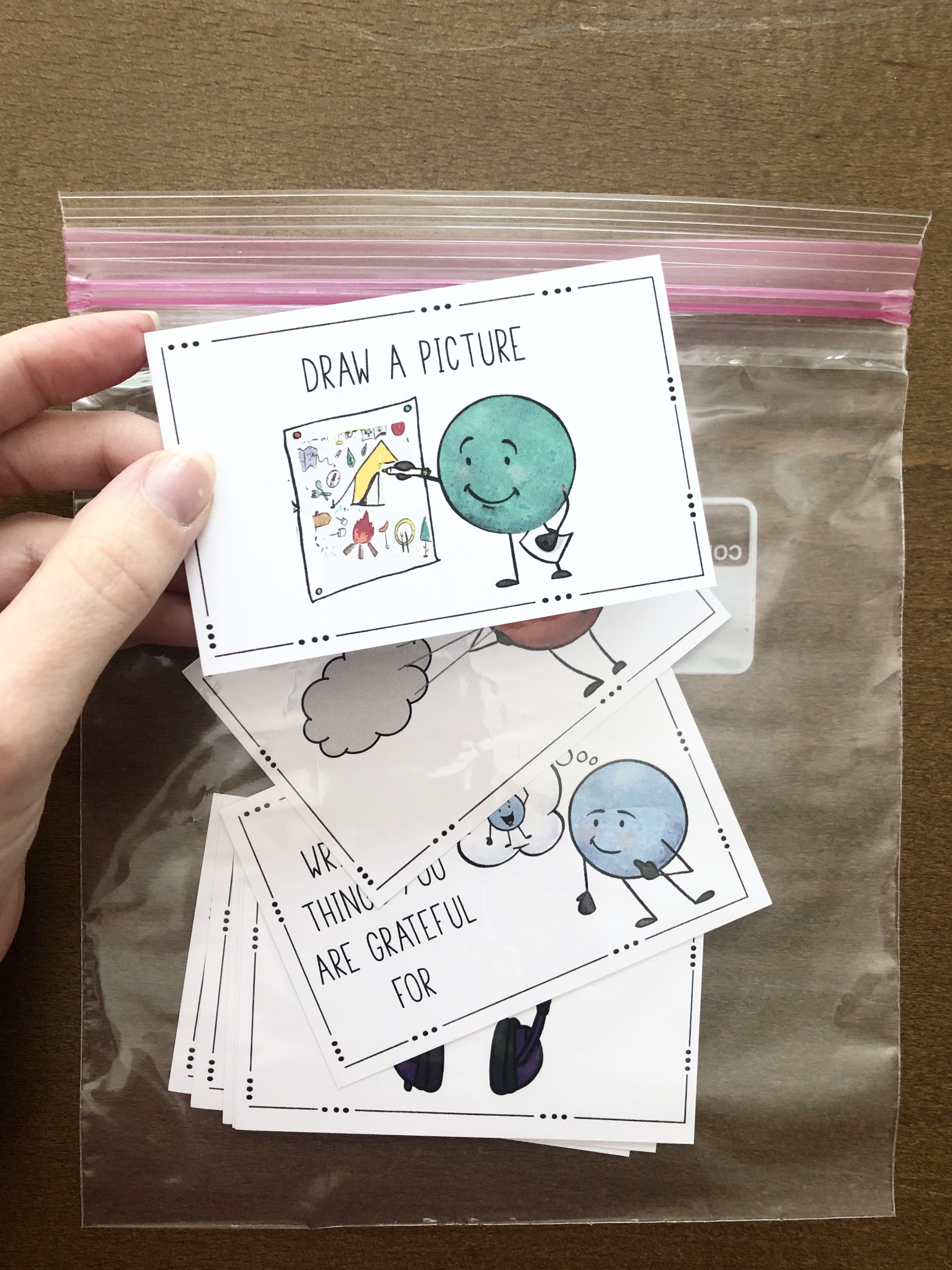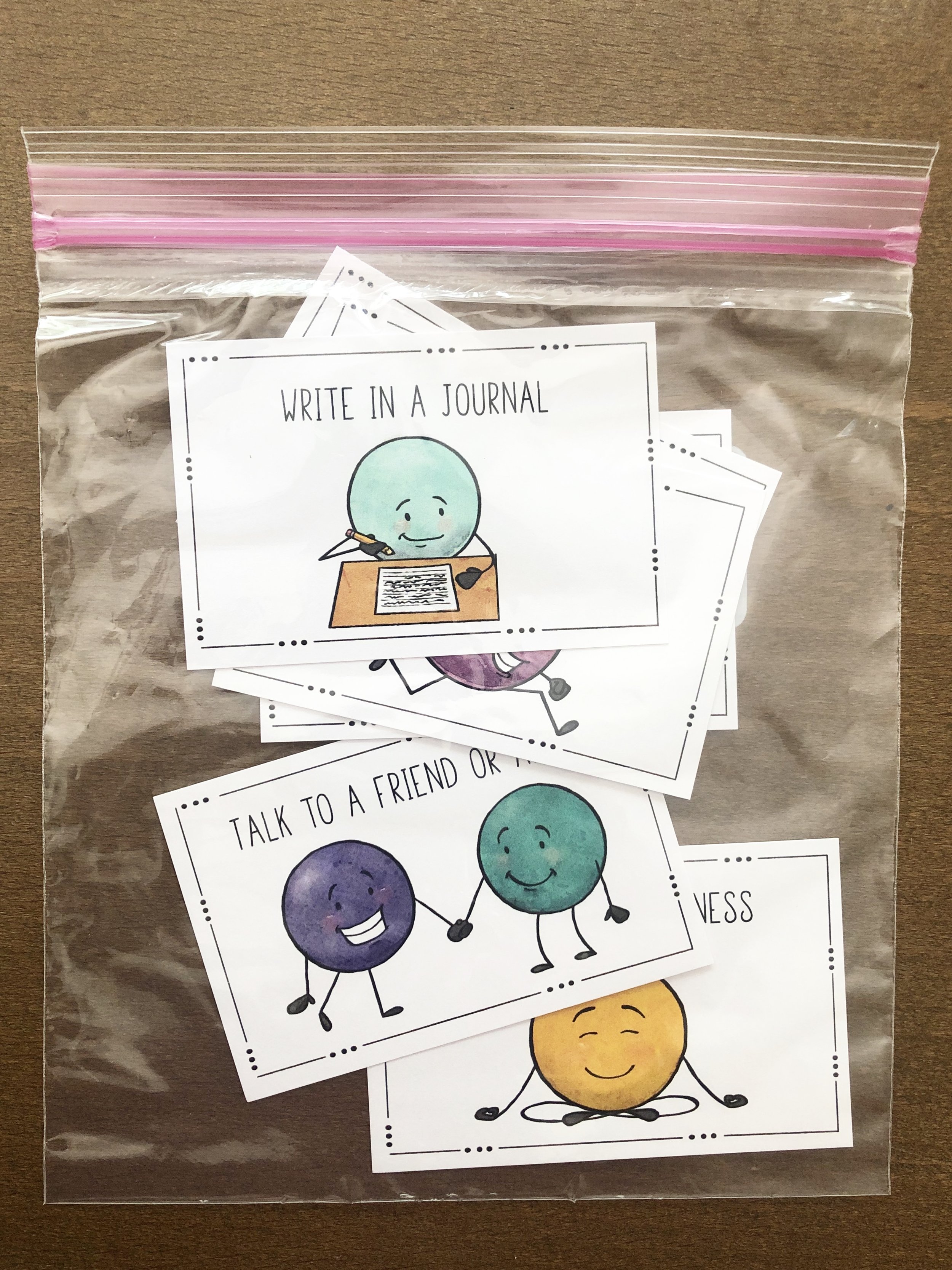5 Things You Should Know About Your Student's Stress
Kids are stressed; probably today more than ever before. While we cannot eliminate the stressful situations from their lives, we can help them find the tools they need to effectively manage them. The more educated we are on the topic of stress, the more helpful we can be to our students.
1. Stress isn’t just mental, it’s physiological.
We often sit down and talk with students who are feeling stressed or send them to a calm down corner to gather their thoughts. While these are helpful strategies, getting our students to a mentally calm state is only half of the process. We also need to help them complete the stress cycle physiologically.
I recently heard of the concept of a “stress cycle” on a podcast episode of Sorta Awesome where they were discussing the book Burnout: The Secret to Unlocking the Stress Cycle by Emily and Amelia Nagoski and it is so fascinating. While the book is geared toward adult women, I found several ways the content could apply to how kids experience stress.
What is a stress cycle?
Due to our genetic hardwiring, our body sends the amygdala into a heightened state during stressful times. At a time this was necessary for survival (think cavewoman running from a saber-tooth tiger) and both mental and physical changes happened in the body in response to the stressor. When she escaped to a safe place, her mind AND body knew the threat was over and returned to a normal state of functioning.
So how does this affect our students?
They are likely experiencing mental stress (friendship drama, test anxiety, etc) and therefore only calming down the mental symptoms. Meanwhile, their body is still in a heightened physiological state in response to the stressful “threat” and we need to address this in addition to their mental needs. How can we do this? Think sensory tools. A weighted pillow, a big hug, or a jog can let the student’s body know they are in a safe space and they can then complete the stress cycle.
2. Students need to feel validated.
In their article 12 Tips to Reduce Your Child’s Stress and Anxiety, Amy Przeworski Ph.D. from Psychology Today states Encourage your child to express his/her anxiety. If your child says that he or she is worried or scared, don't say "No you're not!" or "You're fine." That doesn't help your child. Instead, it is likely to make your child believe that you do not listen or do not understand him/her. Instead, validate your child's experience by saying things like "Yes, you seem scared. What are you worried about?" Then have a discussion about your child's emotions and fears. Address the student’s concerns and truly hear them out rather than quickly offering a solution.
3. Students don’t always know how to ask for what they need.
We must listen and translate. Because children are often not familiar with the word stress and its meaning, they may express feelings of distress through other words such as “worried,” “confused,” “annoyed” and “angry.” Children and teens may also express feelings of stress by saying negative things about themselves, others, or the world around them (e.g. “No one likes me,” “I’m stupid,” “Nothing is fun.”). (American Psychological Association: Identifying Signs of Stress in Your Children and Teens) Part of our role as counselors is to help students advocate for themselves. Give them the verbiage to use and have them practice on days when they’re not feeling stressed that way they can express their feelings when they are feeling stressed.
4. Stress manifests in different ways.
Stress looks different for different kids. A behavior issue or tummy-ache could indicate a deeper issue. Take the time to dig deeper and try to track and notice trends. Again helping students learn how to recognize and share when they’re feeling stressed will help you out with the detective work!
5. Taking ownership relieves stress.
Kids can feel stressed about not knowing how to deal with their stress! Help them take ownership of the situation by defining stress and identifying the difference between avoidable and unavoidable stress. Once they identify avoidable stressors they can eliminate or avoid them. I like to use a visual of an umbrella or headphones to show how how we can block out our avoidable stressors. Different kids resonate with different analogies. Find what works best for the student you’re working with. The umbrella theme is part of these stress management activities I created and the headphones are from one of the sessions in my stress small group.
Also having students create a toolbox of stress buster strategies is a good way to help them feel in control of their stress. Grab these stress buster cards to make a toolbox in my free resource library here.
Click here to check out my Stress Busters 8-week small group counseling curriculum.
Now that you know these 5 things about your students’ stress, I hope you feel better equipped to help them put together a stress management plan!









